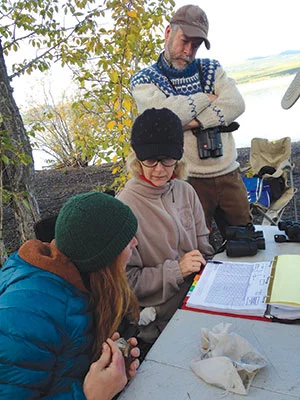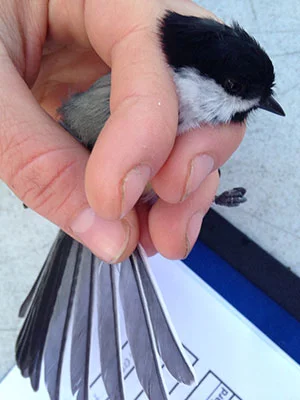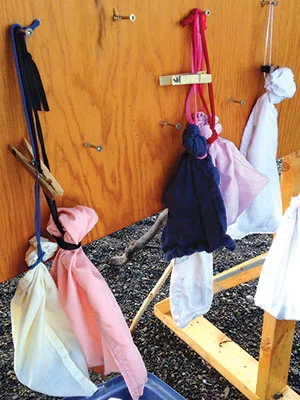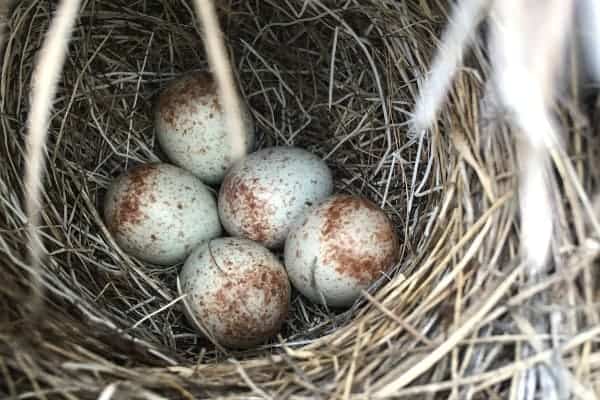With its northwest orientation, Teslin Lake is considered a sort of bird funnel, directing birds south during fall migration. Many migrating birds are attracted to the lakeshore near the mouth of 10-Mile Creek. So many that a seasonal bird banding and monitoring station—the Teslin Lake Bird Observatory—was started there in 2005. Its aim is to support migration monitoring research and education, while also raising public awareness about Yukon’s bird life.
Expert staff and volunteers (though there are few this year) operate the station each fall from late July until early October. It’s co-managed by Ted Murphy-Kelly (who runs the sister Albert Creek Observatory) and Teslin-raised Ben Schonewille, who once worked with Murphy-Kelly as a summer student. Leading the banding and monitoring work is bander-in-charge, Jukka Jantunen.
There’s lots to see, with an average of 50 species banded each year, represented by 1,000 birds in one recent season, Murphy-Kelly said. Jantunen said warblers (Wilson’s and orange-crowned) and flycatchers (especially the alder flycatcher) make up a large wave of migrants until the last week of August, when sparrows and thrushes will begin to appear.
“This year the number of Wilson’s warblers (a tiny yellow bird with a black cap and sweet song) was way up and it arrived much earlier than usual,” Murphy-Kelly said.
New species are also showing up. In early August a Philadelphia vireo was captured at the station. The small green-tinged songbird, which winters in Central America, had a “brood patch” on its belly, indicating it had raised some young.It was one of 50 birds Jantunen banded that day. The camp-like station, set up outside amid stunning views, includes some tables and lawn chairs, a rack for “bird bags,” and binders with data sheets and records.
The observatory is the northernmost member of the Canadian Migration Monitoring Network, requiring standardized protocols for banding and observing birds. It’s intense seasonal work that starts around sunrise. Nets are installed at specific locations throughout the 12-hectare site and checked for birds every 30 minutes. (Nets are closed at the end of each day.) Staff quickly remove captured birds from the fine nylon nets and place each bird in a cloth bag. The bags help to calm the birds until they can be examined and banded. Each bird is measured and data is recorded on each bird’s species, condition, age and sex.
“It’s been a record-breaking season so far, with over 20 species and 830 individual birds banded up to the first week of August,” Murphy-Kelly said.
Migratory land birds are the main focus of bird-banding, but non-migratory birds, such as boreal chickadees, are also being studied. Tracking hawks and eagles (raptors) are a priority during “watches,” when staff use binoculars and scopes. Shorebirds, waterbirds and waterfowl are also monitored (the bulk of swans fly over in October), but banding work always takes precedence.
The station is open to the public daily from sunrise, for six hours, until October 10. The Yukon Bird Club is organizing a field trip there on Sept. 15. Anyone interested is invited to meet at the Teslin Lake Campground at 8 a.m. Signs direct visitors to a path leading to the lakeshore station site. It’s a day trip you’ll remember. Happy birding!







